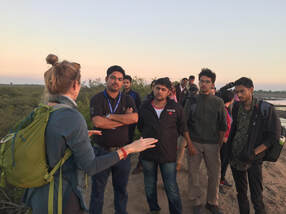 Michelle talks about waterbird research techniques with workshop participants at the Khijadiya Bird Sanctuary.
Michelle talks about waterbird research techniques with workshop participants at the Khijadiya Bird Sanctuary. 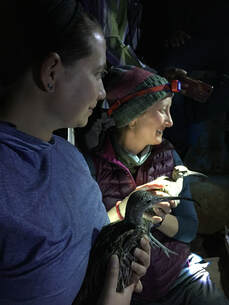 Alison (holding a whimbrel) and Michelle (holding a curlew) assist in the BNHS nighttime banding demonstrations.
Alison (holding a whimbrel) and Michelle (holding a curlew) assist in the BNHS nighttime banding demonstrations. 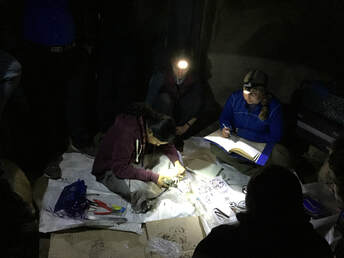 Alison records data for Tuhina Katti, a member of the BNHS bird-banding team.
Alison records data for Tuhina Katti, a member of the BNHS bird-banding team. 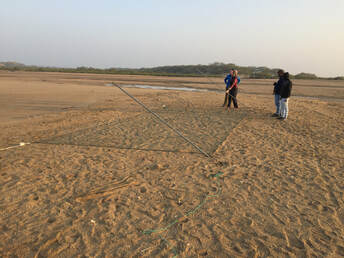 Alison and Michelle set up a whoosh trap demonstration on the sandflats of Balachadi.
Alison and Michelle set up a whoosh trap demonstration on the sandflats of Balachadi. 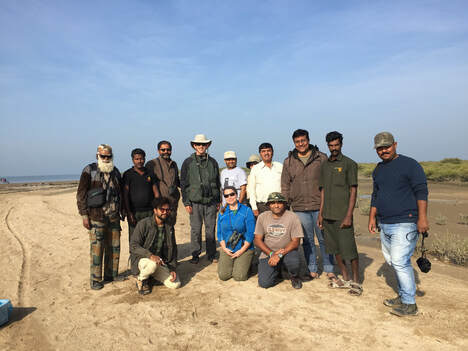 Members of SUNY-ESF, GEER, and BNHS at Balachadi.
Members of SUNY-ESF, GEER, and BNHS at Balachadi.  RSS Feed
RSS Feed
